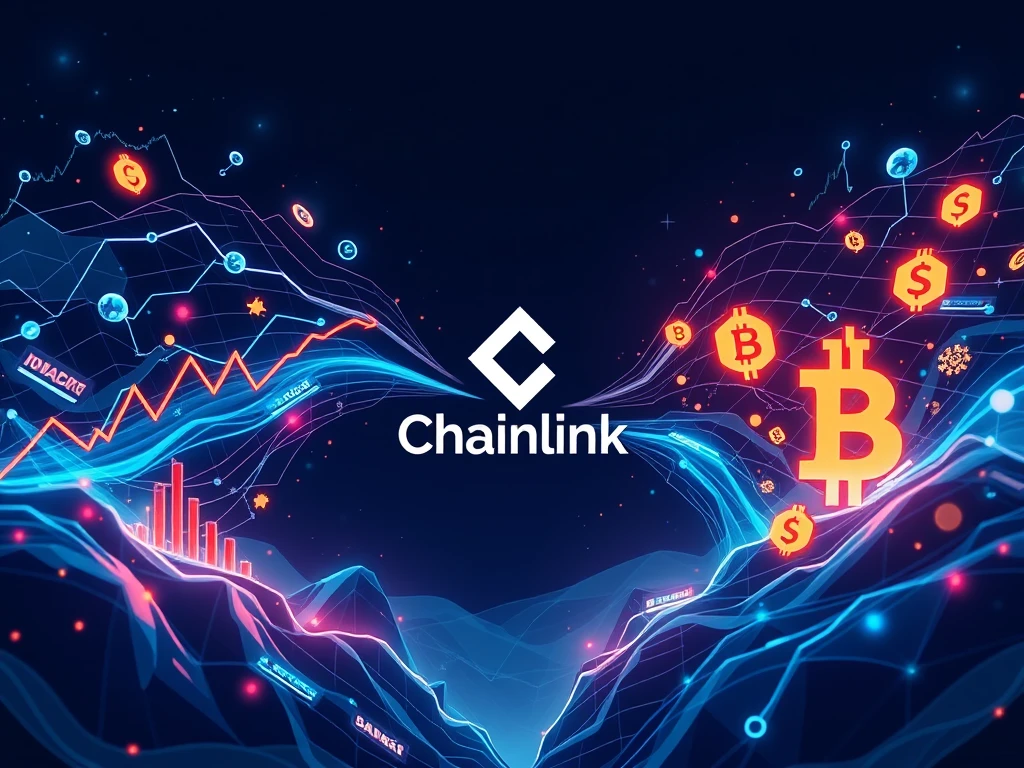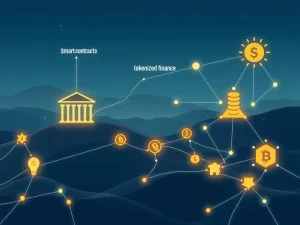Asset Tokenization Revolutionizing Capital Flows, Says Chainlink’s Nazarov

The world of finance is on the cusp of a major transformation, and at the heart of it lies **Asset Tokenization**. This innovative process, which involves issuing digital tokens on a blockchain to represent real-world assets, is poised to unlock unprecedented efficiency and speed in traditional markets. According to **Sergey Nazarov**, co-founder of decentralized oracle network Chainlink, this shift is not just theoretical – it’s actively being built and will significantly accelerate **Capital Flows**.
How Asset Tokenization Boosts Capital Flows
Speaking at Consensus 2025, **Sergey Nazarov** elaborated on the dual nature of this revolution. He explained that increasing the velocity of capital requires two critical components:
- More high-quality assets being represented on-chain.
- More frictionless payment systems that institutions can readily use.
By bringing assets like treasuries, equities, private credit, commercial debt, and real estate onto the blockchain as tokens, the complexities and delays associated with traditional transfers, settlements, and clearing processes can be drastically reduced. This inherent efficiency of blockchain technology allows capital to move faster and more freely between participants.
Chainlink Forges Key Partnerships for RWA Tokenization
Demonstrating Chainlink’s commitment to enabling this future, the company recently announced significant collaborations aimed at building the necessary infrastructure. One key partnership involves JP Morgan’s Kinexys network and digital asset firm Ondo Finance. The goal? To develop institutional-grade payment rails specifically designed for trading tokenized Real-World Assets (RWAs).
This collaboration has already seen success in testing the exchange of Ondo’s tokenized US Government Treasuries Fund (OUSG) with Kinexys. The test utilized Chainlink’s Runtime Environment, a framework designed to connect legacy financial systems seamlessly with blockchain technology. This underscores Chainlink’s strategic position as a bridge between the existing financial world and the burgeoning on-chain ecosystem.
Chainlink’s Role in the Tokenization Ecosystem
**Chainlink** acts as a vital layer in the tokenization process, providing the secure and reliable connection between on-chain smart contracts and off-chain data and systems. Its decentralized oracle network ensures that tokenized assets can interact with real-world information, such as asset valuations, market data, or regulatory compliance checks, in a trustworthy manner.
Nazarov highlighted that Chainlink is actively working with financial institutions, asset issuers, and regulators to coordinate the complex transactions involved in issuing and managing tokenized assets. The Chainlink Runtime Environment is presented as a modern alternative or upgrade path for legacy financial protocols, paving the way for easier institutional adoption of tokenized assets.
The Virtuous Cycle of On-Chain Finance
Chainlink’s strategy is to initiate what Nazarov calls a “virtuous cycle.” By facilitating the movement of both tokenized assets and frictionless payments on-chain, they aim to create a positive feedback loop that drives further adoption and innovation across the industry. More assets on-chain lead to more need for efficient payments, which in turn encourages more assets to be tokenized, and so on.
This aligns with the broader trend of increasing institutional interest in cryptocurrencies and Web3 technologies, partly fueled by shifts in the regulatory landscape. As more high-quality assets become available in tokenized form and the infrastructure for trading them improves, the vision of significantly accelerated **Capital Flows** becomes increasingly tangible.
Conclusion: The Future is Tokenized
The insights from **Sergey Nazarov** at Consensus 2025 reinforce the growing consensus that **RWA Tokenization** is not just a niche application of blockchain but a fundamental shift in how financial markets will operate. Chainlink’s strategic partnerships and technological developments are playing a crucial role in building the necessary bridges between traditional finance and the blockchain world. As more assets are tokenized and payment systems become more integrated, the promise of faster, more efficient, and more accessible **Capital Flows** through asset tokenization moves closer to reality, potentially reshaping global finance for decades to come.










